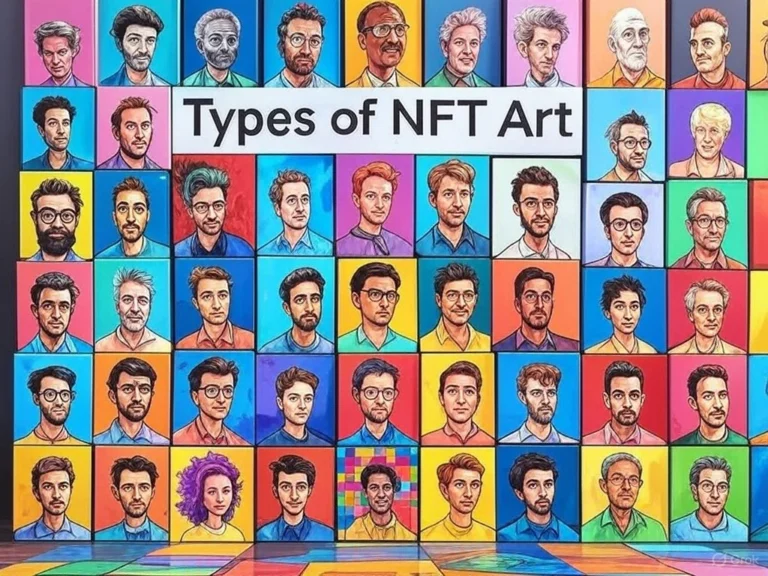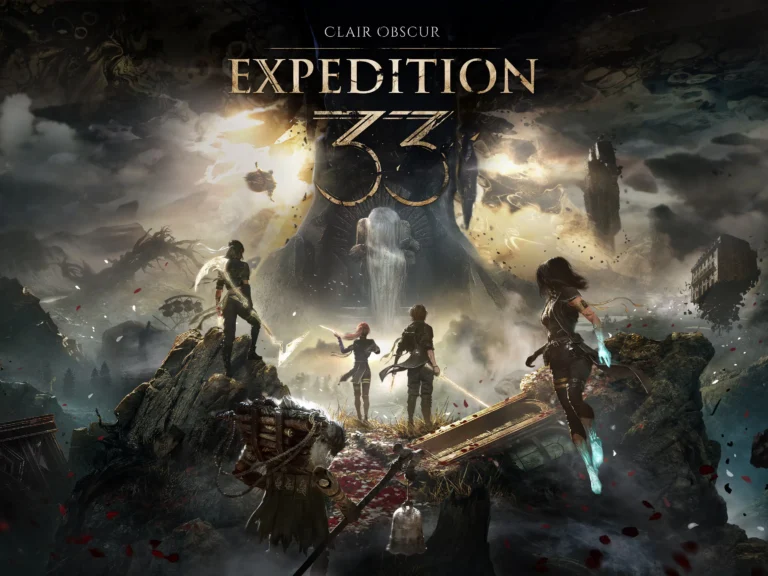Motion capture has transformed the way stories are told on the silver screen, blending the physical artistry of actors with the limitless possibilities of digital technology. The history of motion-capture in the movies is a fascinating journey, from rudimentary techniques to today’s sophisticated systems that bring fantastical characters and worlds to life. What began as a niche experiment has become a cornerstone of modern filmmaking, influencing everything from blockbuster epics to animated masterpieces.
This article of Polydin Game art Outsourcing Studio traces the history of motion-capture in the movies, exploring its early innovations, technological breakthroughs, and lasting impact, while looking ahead to its exciting future.
Early Innovations in the History of Motion-Capture in the Movies
The roots of motion capture stretch back long before computers dominated cinema, laying the groundwork for what would become a revolutionary tool.
Rotoscoping: The Genesis of Motion Capture
The history of motion-capture in the movies begins with rotoscoping, a technique pioneered by Max Fleischer in 1915. Rotoscoping involved projecting live-action footage onto a glass panel, where animators traced over each frame to create lifelike movements for animated characters. Fleischer’s Out of the Inkwell series, featuring Koko the Clown, showcased this method, capturing the fluid motion of his brother Dave in a clown suit.
This painstaking process was later used in Gulliver’s Travels (1939), where rotoscoped human actors lent realism to animated giants, and even in Winsor McCay’s Gertie the Dinosaur (1914), an earlier precursor that blended live performance with animation. While not motion capture in the modern sense, rotoscoping marked the first step in translating human performance into animation, a foundational moment in the history of motion-capture in the movies.

Advancements in the 1950s and 1960s
By the mid-20th century, the history of motion-capture in the movies saw incremental progress. Walt Disney refined rotoscoping for films like Snow White and the Seven Dwarfs (1937), using live actors as reference for character movements, though still manually drawn. In Sleeping Beauty (1959), dancers were filmed to guide the elegant motions of Aurora and Prince Phillip, showcasing rotoscoping’s growing sophistication.
The 1950s and 1960s also brought early experiments with electronic systems, such as Lee Harrison III’s analog motion-capture suit in the 1960s. His “Animac” device used potentiometers to track body movements and animate simple figures on a screen, a crude but visionary step. Meanwhile, TV productions like The Flintstones (1960) borrowed rotoscoped dance sequences from live-action references, hinting at broader applications in the history of motion-capture in the movies.
Technological Breakthroughs in History of Motion-Capture in the Movies
As technology advanced, motion capture evolved from analog curiosity to a digital powerhouse, reshaping cinema.
1970s–1980s: Integration with Computer Graphics
The history of motion-capture in the movies took a significant turn in the 1970s and 1980s with the rise of computer graphics. Early CGI experiments, like those in Westworld (1973), used basic digital techniques to render the Gunslinger’s pixelated vision, but motion capture remained rudimentary. The 1980s saw pioneers like MIT’s Tom Calvert develop optical systems with reflective markers to track movement, syncing it with computer animation. Films like Tron (1982) leaned heavily on CGI for its light cycles, though motion capture wasn’t yet practical.
The Last Starfighter (1984) advanced the field with digitally rendered ships and characters, while Young Sherlock Holmes (1985) featured a stained-glass knight animated with early CGI, foreshadowing how the history of motion-capture in the movies would intertwine with computer-generated visuals. By the late ’80s, companies like SimGraphics experimented with facial motion capture for commercials, laying groundwork for cinematic use.
1990s: Mainstream Adoption in Cinema
The 1990s were a turning point in the history of motion-capture in the movies, as the technique gained traction in Hollywood. Total Recall (1990) used early motion-capture systems for robotic effects, like the X-ray skeleton chase, blending practical and digital work. Terminator 2: Judgment Day (1991) showcased CGI’s potential with the liquid-metal T-1000, though it relied more on morphing than true motion capture services .
By the late ’90s, motion capture matured with films like Titanic (1997), where digital extras were animated using captured performances to populate the sinking ship, and The Mummy (1999), where Imhotep’s skeletal form used motion data for eerie realism.
The decade closed with Star Wars: Episode I – The Phantom Menace (1999), introducing Jar Jar Binks—a fully motion-captured character performed by Ahmed Best, marking a milestone in the history of motion-capture in the movies that sparked both praise and debate.
2000s
The 2000s solidified motion capture’s place in cinema. The history of motion-capture in the movies reached new heights with The Lord of the Rings: The Two Towers (2002), where Andy Serkis brought Gollum to life using a marker-based suit tracked by infrared cameras. Peter Jackson’s team at Weta Digital paired Serkis’ performance with advanced CGI, setting a new standard for digital characters. Robert Zemeckis pushed boundaries further with The Polar Express (2004), using full-body motion capture to animate an entire cast, including Tom Hanks in multiple roles, though its “uncanny valley” effect highlighted early limitations.
Monster House (2006) refined this approach for a smaller-scale horror-comedy, capturing child actors’ movements for its animated leads. James Cameron’s Avatar (2009) capped the decade, blending real-time motion capture with photorealistic visuals of Pandora, revolutionizing the history of motion-capture in the movies and grossing over $2 billion worldwide.
The Impact and Legacy of Motion Capture in Film
Motion capture’s influence extends beyond technology—it’s reshaped storytelling and performance in cinema.
Creating Unforgettable Digital Characters
The history of motion-capture in the movies is rich with iconic digital characters. From Gollum to Avatar’s Na’vi, motion capture allows actors to inhabit roles impossible in live-action alone. Serkis’ work on Caesar in the Planet of the Apes trilogy (2011–2017) showcased how nuanced performances—every grimace and gesture—could shine through digital layers, while Alita: Battle Angel (2019) used Rosa Salazar’s captured expressions to create a wide-eyed cyborg heroine, blending humanity with machine.
Enabling New Genres and Storytelling Possibilities
Motion capture has birthed genres like the modern fantasy epic and sci-fi spectacle. The history of motion-capture in the movies shows how films like Avatar and The Avengers (2012)—with its motion-captured Hulk—pushed narrative boundaries, blending live-action with fantastical worlds. Smaller films, like Monster House (2006) and A Christmas Carol (2009), used it to craft eerie or festive animated tales, proving its versatility across budgets and styles, from family-friendly to dark fantasy.
Changing the Role of the Actor
Actors now play dual roles as performers and digital avatars, a shift evident in the history of motion-capture in the movies. Serkis, Zoe Saldana (Avatar), and Josh Brolin (Thanos in Avengers: Infinity War) exemplify how motion capture demands physicality and emotion, often in spandex suits under studio lights. This evolution has sparked debates about Oscar eligibility for “digital acting” and even led to specialized training programs for actors by 2025, highlighting its growing prominence.
The Evolution of Visual Effects
The history of motion-capture in the movies parallels the rise of visual effects. From practical effects in Jurassic Park (1993) to CGI-heavy blockbusters like Jurassic World (2015)—where velociraptors were enhanced with motion-captured stunts—it’s bridged the gap. Even earlier, Who Framed Roger Rabbit (1988) used rotoscoping-inspired techniques that paved the way for motion capture’s VFX dominance.
Evolution of Animation Techniques
Motion capture didn’t emerge in isolation—it evolved alongside animation itself.
Transition from Rotoscoping to Performance Capture
The history of motion-capture in the movies traces a clear arc from rotoscoping to performance capture. Where rotoscoping required frame-by-frame tracing, performance capture—pioneered in the 2000s—records an actor’s movements and expressions in real-time using suits and facial cameras. This leap, seen in Beowulf (2007) with its detailed digital cast including Ray Winstone, allowed for more natural animation. By capturing subtleties like Anthony Hopkins’ furrowed brow, it marked a key evolution in the history of motion-capture in the movies.
Integrating CGI into Traditional Animation
Motion capture also merged with traditional animation, enhancing films like Happy Feet (2006), where penguin dances were captured from human performers like Savion Glover. The history of motion-capture in the movies shows how this hybrid approach added realism to stylized worlds. The Iron Giant (1999) used early CGI alongside rotoscoped elements, while Sinbad: Legend of the Seven Seas (2003) blended hand-drawn characters with motion-captured sea creatures, foreshadowing this trend’s growth.
Modern Applications and Innovations
Today, motion capture is ubiquitous, extending its reach beyond cinema.
Motion Capture in Contemporary Filmmaking
In 2025, the history of motion-capture in the movies continues with films like The Batman (2022), where Robert Pattinson’s stunt double was motion-captured for dynamic fight scenes choreographed in Gotham’s shadows. Blockbusters like Avatar: The Way of Water (2022) refine underwater motion capture with submersible rigs and water-resistant markers, pushing technical limits. Indie films, too, adopt affordable systems like Rokoko suits, democratizing the craft and allowing creators to experiment with motion capture on shoestring budgets.
Expansion into Video Games and Virtual Reality
The history of motion-capture in the movies spills into gaming and VR. Titles like The Last of Us Part II (2020) use motion capture for lifelike characters—Ashley Johnson’s Ellie feels hauntingly real—while Red Dead Redemption 2 (2018) captured hundreds of actors for its sprawling cast. VR experiences like Half-Life: Alyx (2020) rely on it for immersive interactions, tracking players’ hands and heads, showcasing its versatility beyond traditional film.
The Future of Motion Capture in Movies
The history of motion-capture in the movies is far from over—new technologies promise even greater advancements.
Artificial Intelligence (AI) and Machine Learning (ML) Integration
AI and ML are poised to revolutionize motion capture. In 2025, systems can predict and refine captured data, reducing cleanup time for animators. The history of motion-capture in the movies may soon include AI-driven characters that adapt to actors’ performances in real-time, as seen in early experiments by studios like Epic Games with their MetaHuman Creator, blending pre-built models with live input. This could lead to fully autonomous digital extras in crowd scenes.

Markerless Motion Capture System
Markerless systems, using cameras and depth sensors, are gaining traction. Companies like Xsens and Microsoft’s Kinect pioneered this shift, eliminating the need for bulky suits. In the history of motion-capture in the movies, markerless tech could dominate, offering flexibility—imagine capturing a crowd scene on location with just a smartphone—and reducing setup costs for indie filmmakers breaking into the industry.
Real-Time Motion Capture
Real-time motion capture, enhanced by tools like Unreal Engine, lets directors see performances instantly on digital characters. Used in The Mandalorian (2019–) via “The Volume”—a massive LED stage—it blends pre-production and filming seamlessly. The history of motion-capture in the movies might evolve into a fully live process, where directors tweak CGI in the moment, as seen in experimental shorts at festivals like Sundance 2025, or even live-streamed film productions blending theater and cinema.
Conclusion
The history of motion-capture in the movies is a testament to human ingenuity, evolving from rotoscoping’s humble beginnings to today’s cutting-edge systems. It’s given us unforgettable characters, expanded storytelling, and redefined acting and effects. As AI, markerless systems, and real-time tech propel it forward, motion capture remains a vital force in cinema, promising a future where the line between reality and digital illusion blurs even further. The history of motion-capture in the movies isn’t just a technical tale—it’s the story of how we’ve learned to dream bigger, one frame at a time.



